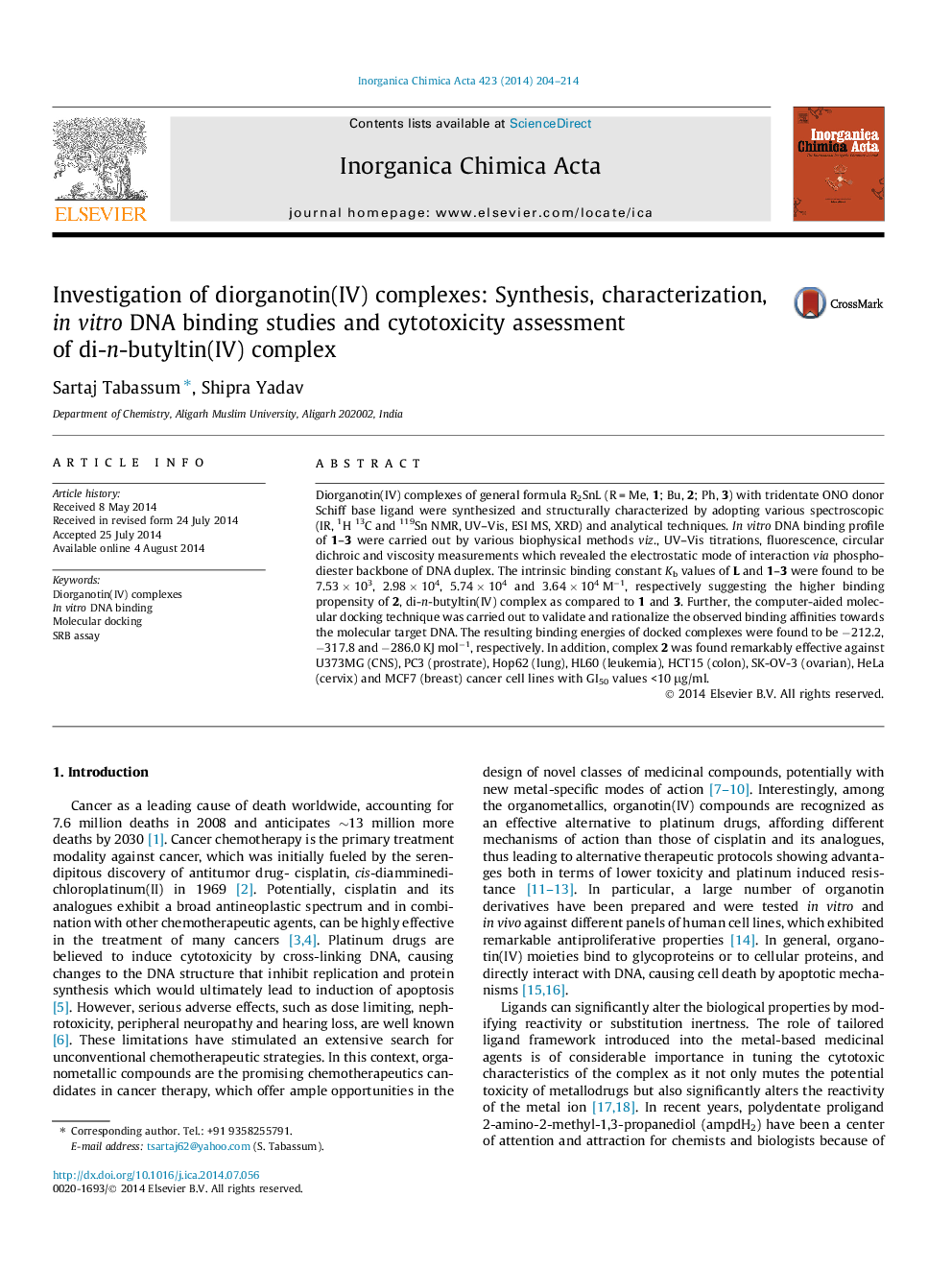| Article ID | Journal | Published Year | Pages | File Type |
|---|---|---|---|---|
| 1309358 | Inorganica Chimica Acta | 2014 | 11 Pages |
•Synthesis and characterization of diorganotin(IV) analogues 1–3.•Preliminary in vitro binding profile of the complexes with CT DNA.•n-Dibutyltin(IV) complex, 2 exhibited higher binding propensity towards DNA.•2 displayed good cytotoxicity against eight different cancer cell lines.•Molecular docking studies validated the observed DNA binding affinities.
Diorganotin(IV) complexes of general formula R2SnL (R = Me, 1; Bu, 2; Ph, 3) with tridentate ONO donor Schiff base ligand were synthesized and structurally characterized by adopting various spectroscopic (IR, 1H 13C and 119Sn NMR, UV–Vis, ESI MS, XRD) and analytical techniques. In vitro DNA binding profile of 1–3 were carried out by various biophysical methods viz., UV–Vis titrations, fluorescence, circular dichroic and viscosity measurements which revealed the electrostatic mode of interaction via phosphodiester backbone of DNA duplex. The intrinsic binding constant Kb values of L and 1–3 were found to be 7.53 × 103, 2.98 × 104, 5.74 × 104 and 3.64 × 104 M−1, respectively suggesting the higher binding propensity of 2, di-n-butyltin(IV) complex as compared to 1 and 3. Further, the computer-aided molecular docking technique was carried out to validate and rationalize the observed binding affinities towards the molecular target DNA. The resulting binding energies of docked complexes were found to be −212.2, −317.8 and −286.0 KJ mol−1, respectively. In addition, complex 2 was found remarkably effective against U373MG (CNS), PC3 (prostrate), Hop62 (lung), HL60 (leukemia), HCT15 (colon), SK-OV-3 (ovarian), HeLa (cervix) and MCF7 (breast) cancer cell lines with GI50 values <10 μg/ml.
Graphical abstractDi-n-butyltin(IV) complex, 2 as a potential cancer chemotherapeutic agent targeting DNA.Figure optionsDownload full-size imageDownload as PowerPoint slide
